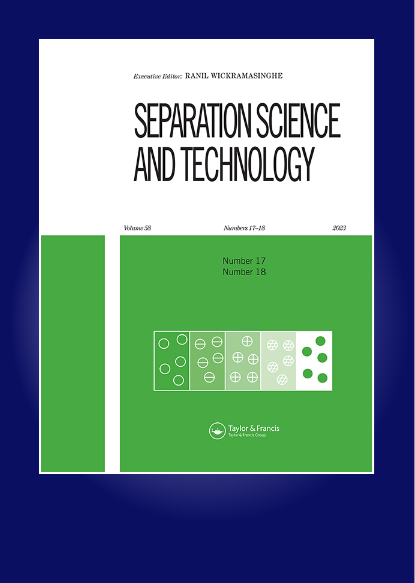用缩芯模型研究废锌- c电池中Mn和Zn的溶解动力学
IF 2.3
4区 工程技术
Q3 CHEMISTRY, MULTIDISCIPLINARY
引用次数: 0
摘要
随着时间的推移,由于自然资源的减少以及这些资源对环境的可能危害,从废电池中回收有价值的金属变得越来越重要。回收废旧电池也可获得经济效益。从废锌碳电池中回收有价金属锰(Mn)和锌(Zn)引起了许多研究者的关注。湿法冶金法是回收废锌电池中金属的一种有效方法。研究了废锌- c电池中锰、锌在硫酸(H2SO4)溶液中的溶解动力学。在搅拌速度为400 rpm、H2SO4浓度为0.25 M、温度为70℃、粒径为- 53µM的条件下,Mn和Zn的溶出回收率在60 min内达到最大值。在此条件下,锰和锌的溶出回收率分别为62.56%和100%。为了确定Mn和Zn在H2SO4溶液中的溶解动力学,采用了新的缩核模型方程,确定了Mn和Zn在H2SO4溶液中的溶解是通过界面传质和产品层间的扩散进行的。本文章由计算机程序翻译,如有差异,请以英文原文为准。
Kinetic study of Mn and Zn dissolution from waste Zn-C batteries by shrinking core model
ABSTRACT The recovery of valuable metals from waste batteries gains more importance over time due to the decrease in natural resources and the possible harms of these to the environment. Economic benefits can also be obtained by recycling waste batteries. The recovery of valuable metals such as manganese (Mn) and zinc (Zn) in waste zinc-carbon (Zn-C) batteries has attracted the attention of many researchers. Hydrometallurgical methods are used as an effective method for the recovery of metals from waste Zn-C batteries. In this paper, kinetics of Mn and Zn dissolution from waste Zn-C batteries in sulfuric acid (H2SO4) solution was studied. The maximum Mn and Zn dissolution recoveries in 60 min leaching time were achieved using 400 rpm stirring speed, 0.25 M H2SO4 concentration, 70°C temperature and −53 µm particle size. In these conditions, Mn and Zn dissolution recoveries were obtained as 62.56% and 100%, respectively. To determine the dissolution kinetics of Mn and Zn, a new equation of shrinking core model was used and determined that Mn and Zn were dissolved in H2SO4 solution by interfacial mass transfer and diffusion across the product layer.
求助全文
通过发布文献求助,成功后即可免费获取论文全文。
去求助
来源期刊

Separation Science and Technology
工程技术-工程:化工
CiteScore
6.10
自引率
3.60%
发文量
131
审稿时长
5.7 months
期刊介绍:
This international journal deals with fundamental and applied aspects of separation processes related to a number of fields. A wide range of topics are covered in the journal including adsorption, membranes, extraction, distillation, absorption, centrifugation, crystallization, precipitation, reactive separations, hybrid processes, continuous separations, carbon capture, flocculation and magnetic separations. The journal focuses on state of the art preparative separations and theoretical contributions to the field of separation science. Applications include environmental, energy, water, and biotechnology. The journal does not publish analytical separation papers unless they contain new fundamental contributions to the field of separation science.
 求助内容:
求助内容: 应助结果提醒方式:
应助结果提醒方式:


